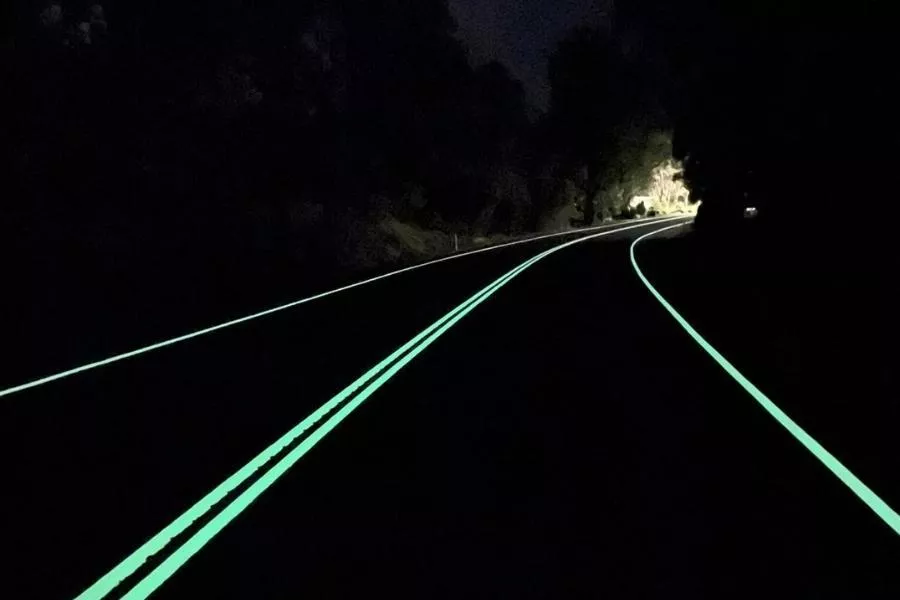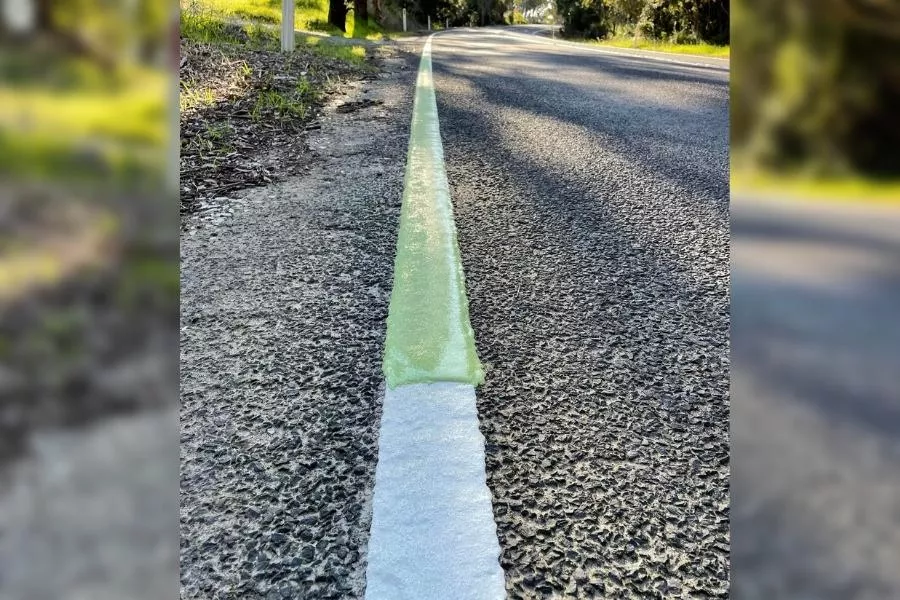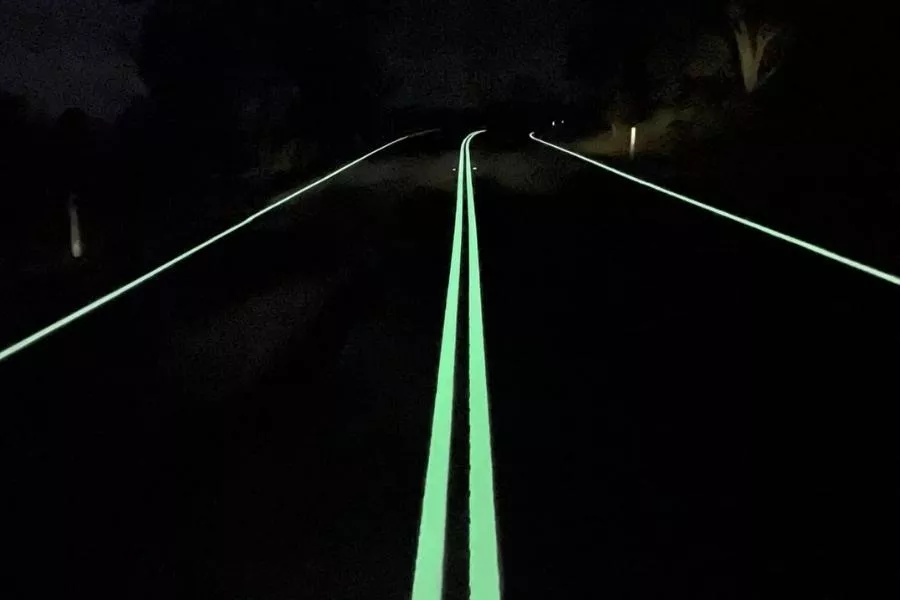Driving can be therapeutic for some, and road trips can give individuals fond memories. But, accidents might happen no matter how responsible you are behind the wheel.
 Glow-in-the-dark road markings [Photo: Tarmac Linemarking]
Glow-in-the-dark road markings [Photo: Tarmac Linemarking]
In fact, the World Health Organization (WHO) cited that around 1.3 million people die each year as a result of road traffic crashes. Locally, there were 6,440 deaths recorded caused by transportation accidents between January and September 2021, according to the Philippine Statics Authority (PSA).
It’s an obvious fact that road traffic crashes are something that needs to be addressed. This is why the United Nations (UN) is pushing for a global plan for road safety, which aims to reduce global road traffic accidents by 50 percent.
Speaking of a new approach, the Netherlands used glow-in-the-dark (GID) road markings back in 2014 to help the government save up on electricity costs by shutting down streetlights at night. The GID road markings contain a photo-luminescing powder that charges up in the daytime, and slowly produces a green glow at night.
Recently, Country Victoria in Australia is also conducting a trial run of the GID road markings after recording an increase in road fatalities as pandemic restrictions eased in the said country. The Australian government teamed up with Tarmac Linemarking in installing new photoluminescent double lines in regional areas to help drivers stay alert while on the road.
 It has two layers [Photo: Tarmac Linemarking]
It has two layers [Photo: Tarmac Linemarking]
Tarmac shared that GID road markings consist of two layers of thermoplastic, which is different from traditional paint. The first layer charges throughout the day, while the second layer (the one on top) produces a glow at night. The thermoplastic layer is said to last around three to five years.
Meanwhile, a study conducted by the International Journal of Civil Engineering and Technology (IJCIET) stated that the amount of glow depends on the illuminance throughout the day. It says that a sunny day will have a stronger illuminance compared to when it’s a rainy day.
IJCIET added that the GID road markings hold their maximum effect only for a limited period of time while the fluctuation in light intensity during the day affects the amount of glow it produces at night.
The findings in IJCIET’s study are the same as what happened in the Netherlands back in 2014. As it turns out, the GID road markings are sensitive to large amounts of moisture due to rainfall. This resulted in not giving out a consistent level of light, defeating the purpose of GID road markings.
 Do you think that it can make a difference in the Philippines? [Photo: Tarmac Linemarking]
Do you think that it can make a difference in the Philippines? [Photo: Tarmac Linemarking]
The concept behind GID road markings is something worth considering as it can give additional visibility to drivers during nighttime. In the Philippine setting, GID road markings can be put into the not so well lighted streets, or even in expressways. GID road markings can also increase nighttime visibility on long stretches of provincial roads where it usually doesn’t come with enough streetlights.
While modern cars now come with advanced LED lighting systems, having additional tools while driving on the road is not a bad thing, especially at night. Afterall, all we want is to reach our destination safely, right? That said, do you think that glow-in-the-dark markings can make our roads safer? Cast your vote now in Philkotse’s Poll of the Week.
Recent posts
- volkswagen group ceo says ev shift too soon May 16, 2022
- Geely Radar EV truck patent May 12, 2022
- Ford Mustang Model 711 May 12, 2022











